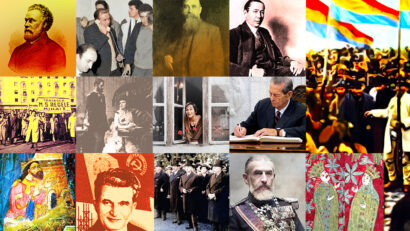Nicolae Ceausecu: A Portrait
For decades, the life of Romania's communist elites was a mystery for the common people.

România Internațional, 13.03.2017, 11:51
For decades, between 1945 and 1989, the life of
Romania’s communist elites was a mystery for the common people. Their
interests, their concerns, their discussions and decisions were kept secret,
and the news that would reach the people every now and then was rumours, rather
than information that somebody could actually check.
After the fall of the communist regime in 1989,
people were able to make an opinion on Ceausescu, the man, outside of the
television broadcasts, public appearances and party assemblies. Leaving aside
the exaggeration and gossip surrounding the life of any leader, particularly
one that had always prevented his people from knowing him, we find an ambitious, poorly educated man,
but one able to understand situations and make decisions.
Engineer Stefan Barlea was Ceausescu’s personal
secretary in the 1980s, and he has a lot of memories about socialist Romania’s
strongman. In 2002, he told the Oral History Centre of the Public Radio
Broadcasting Corporation about his first meeting with Ceausescu, at a 1965
meeting of communist party activists in the academia. At that time, Ceausescu
was the secretary general of the party’s Central Committee.
Stefan Barlea: We
go into this nice, long hall, decorated in a style that Ceausescu liked, the
same style he later used for his offices in the Central Committee building. And
as we are waiting, a short, nervous looking guy comes in and asks, ‘Are all the
comrades here yet?’ And in comes Ceausescu, followed by two other activists. He
shakes hands with everyone, and says, ‘Comrades! I’ve called this consultation
meeting at the request of the party leaders, because we believe work in the
higher education institutions must be improved in certain respects. We are
aware that you are working hard and doing a good job, but it doesn’t keep up
with party requirements!’ He looks at us and goes on, ‘We’re thinking about
setting up a union of student associations, and I’ve invited you here to ask
for your opinion. And obviously, if you agree with the plan, it will be you who
will set up this structure, it can’t be the party doing it!’ Then he briefly
explained what the document said, and he added, ‘I got ta level with you!’ I
immediately noticed his poor use of the Romanian language. ‘Comrades, we can’t
build socialism and a developed country without a strong intellectual class
embracing the values of the working class’.
Young Ceausescu made a very good impression on
Barlea, so the latter did not hesitate to become a collaborator of the supreme
leader. Stefan Barlea:
VM TRACK: He made a very good impression on
me. He was young, he spoke openly, in a friendly manner and when he shook hands
with me he gave me a friendly look, just like he did with the others. Upon
leaving, he made that very familiar gesture of waving his arms at us. I liked
him the first time I saw him. He impressed me deeply and everybody felt the
same. Later I had the impression that the real goal was to bring intellectuals
closer to the party, which was exactly what happened.
Ceausescu very much relied on his memory, but he was
also known to carry a notebook that helped him remember what was important.
Stefan Barlea also talked about the role that particular notebook played in
Ceausescu’s interactions with other people.
Stefan Barlea: The black notebook did not
necessarily have to be black. It could also be blue or red. It was a simple
pocket notebook, with very thin pages. Ceausescu had a new notebook every year,
in which he would write down things, including information on Romania as well
as some international data. They were mostly statistical data, about Romania
and about other countries and also some empty pages for personal notes. There
were no drawings or anything else. Sometimes he used to make a little drawing
while he was listening to somebody, but always on a separate sheet of paper,
never in his notebook. The notebook was exclusively used for names and
information such as the place and time of a certain event where he’d met
someone. If he noticed someone, he would write their name down in the notebook
so that he could later get in touch with them and promote them. He used to hold
the notebook in his coat’s pocket. And since he sometimes left his coat at he
office we would make sure he did not forget it. There was a guy, Nastase, who
checked his fountain pens and who also checked to see if Ceausescu had the
notebook with him. Ceausescu did not take the notebook with him abroad, but in
the country he had to have it on him at all time. And anyway, he had an
extraordinary memory, he would never forget a person.
Ceausescu’s personality was dominated by negative
traits, and his style was brutal and aggressive, which eventually led to him
being violently ousted from power in December 1989. Nevertheless, Ceausescu
must be analysed against the background of the entire communist regime imposed
on Central and Eastern Europe between 1945 and 1989.






























